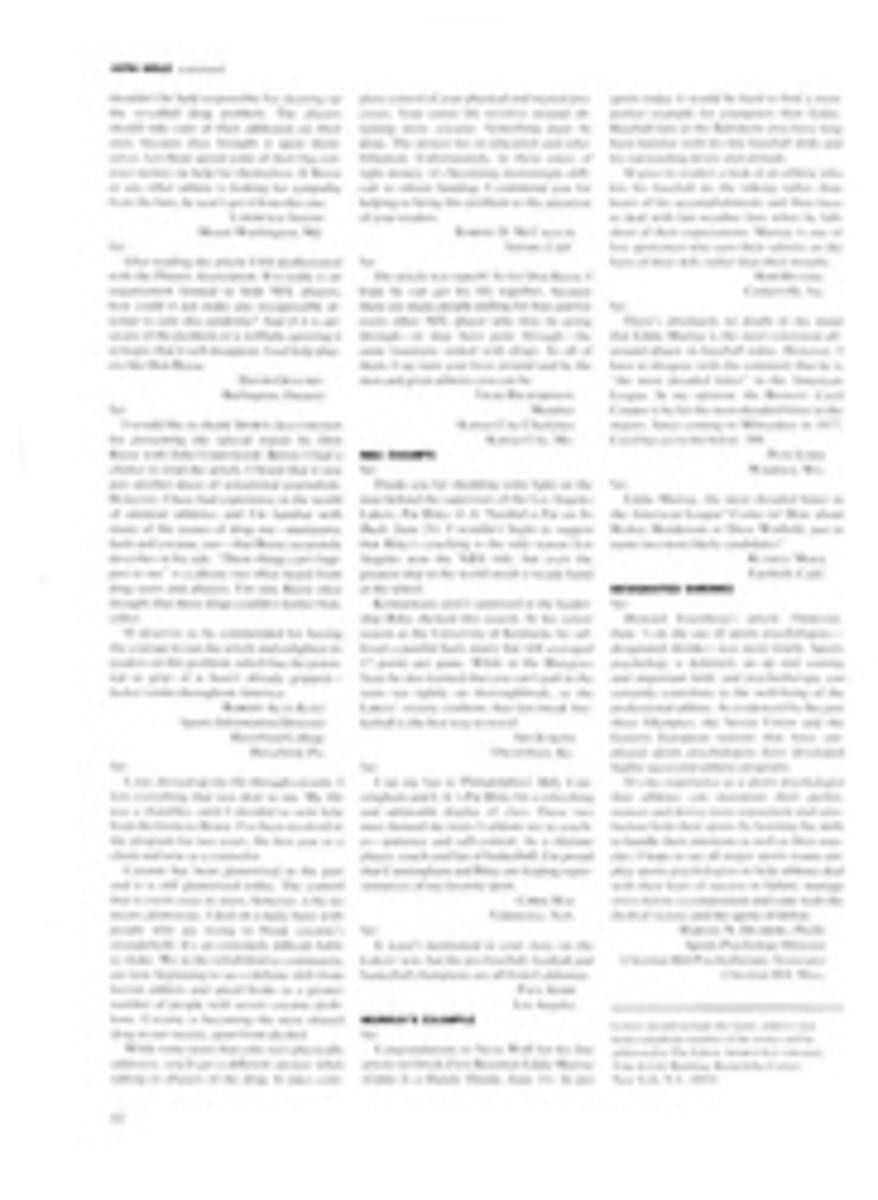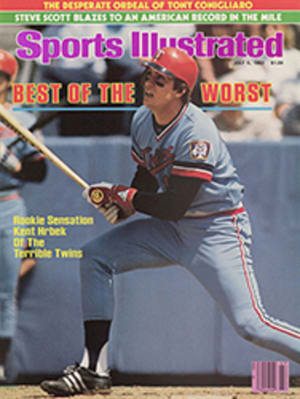
High fliers from Down Under
On a scruffy stretch of sand alongside San Francisco Bay last week there gathered a small fleet of boats that, when beached, looked like 11 backyard wading pools with Lego superstructures. When released on the waters of the bay, however, the boats flew like a squadron of dragonflies. These were Australian 18s, "eyedeens" if you prefer, skiffs raced with typical Aussie verve in Sydney Harbour since the 1890s. They have just begun to attract the attention of American sailors, young ones mostly, who are drawn by the speed of the 18s—up to 35 mph downwind—and by the hell-bent-for-leather style of racing that they afford. It is said of the three-man crews who sail these space-age hot rods while scrambling over racks that extend as far as 5½ feet from either side, that they must be as agile as monkeys and as strong as gorillas.
Showing their stuff last week were eight of the best 18-foot skiffs in Sydney's 40-boat fleet, joined by three American boats, sponsored—that's right, sponsored, just like racing cars and bowling teams—by Coors beer, Celeste Pizza and Hulse/Chrisman Spars. In a seven-race series over four days, in winds that seldom blew with the intensity that makes San Francisco summer sailing unique but that, nevertheless, were testing enough when combined with the ferocious tides that run through the Golden Gate, one Aussie boat, Tia Maria, set itself apart. Skippered by a 40-year-old Sydney solicitor, Peter Sorensen, with Andrew Buckland, 26, as sheethand and David Stephens, 25, as forward hand, Tia Maria won five of the seven races and led throughout most of them. Oddly, one of the races Tia Maria didn't win, the fifth, was perhaps her crew's finest hour.
During what was meant to be a 15-minute intermission between the fourth and fifth races on Saturday, a pause in which the crews customarily gulp down sandwiches and beer while drifting in the vicinity of the starting line, suddenly the Australian boat Colorbond, then in second place in the standings, set sail for the beach half a mile away. There, Skipper Kevin Wadham and his crew, with some help from spectators, hurriedly lifted the boat out of the water, turned it on its side and began the complicated process of changing from a No. 4 rig to a No. 3, an accommodation to the unexpectedly light winds.
Each 18-footer has four sets of masts and sails for varying conditions. The No. 1 rig, for instance, is for the lightest air, zero to 12 knots. Its mast is a towering 37 feet, and its sail area—main, jib and spinnaker—comes to about 1,410 square feet. The No. 4 mast, which would almost always be used in the blustery winds of San Francisco Bay, is shorter (29' 3"), the sail area is smaller (750 square feet), and the rig is intended for winds from 19 to 40 knots. All but one boat had put in the No. 4 rig, but when the typical afternoon blow didn't materialize, Wadham decided to risk losing time at the start of the fifth race in order to change to the lighter rig. To be competitive against its closest rival, Tia Maria was obliged to do the same.
While the two crews scrambled on the beach, the rest of the fleet was approaching the start. As the boats on the beach were launched, the starter's gun sounded, and with a loss of about three minutes Tia Maria and Colorbond set out to catch the fleet. (Celeste Pizza had also changed rigs, but her crew had made it back to the line in time for the start.)
Amazingly, Tia Maria came in second over the 9.3-mile, triangular course. By the first windward mark, she had caught every boat except Celeste and Coors and probably would have beaten both at the finish, except that on the last windward leg, a metal fitting at the top of her mast broke and the mainsail began to slide down the mast. "We kind of slipped in on the rocks, turned her over and tied the sail in place with a piece of cord," said Sorensen later, as if that sort of emergency repair were commonplace.
Celeste Pizza won that race, a triumph for an American crew whose average age was 20½. Coors was third, only 28 seconds behind Tia Maria, another moral victory for the U.S. underdogs, while Colorbond was fourth. For Tia Maria the two final races on Sunday were just a formality. She won the first and finished fourth in the second, when a guest skipper took charge, while two second-place finishes by Stubbies secured second overall for that Aussie boat.
The turn-of-the-century forerunners of today's 18-footers were heavy wooden skiffs that carried acres of cumbersome cotton sails and crews of up to 22 men, who trundled from one side of the boat to the other trying to keep their craft upright. They raced for prize money and still do, although not very much of it. Whatever the size of the prize, however, it's expected to find its way to the bar when the racing day is done. Skiff racing started as a blue-collar sport and, as such, it has always had a mighty weekend following in Sydney. Ferries loaded to the gunwales with punters follow the races around Sydney Harbour, and bookies are prepared to set odds on any and every eventuality—who will be first at the next mark, who will capsize, etc. Television covers the championships, newspapers cover the racing all season long and young 12-foot skiff sailors even collect autographs of their heroes in the 18s.
Iain Murray, who retired last January at the age of 24 after winning the world championship for the sixth consecutive year, continues to dominate the class through the boats he designs. Tia Maria is Murray's newest creation, but another Tia Maria is on the way. (The present one has already been purchased by Wang Computers.) In a developmental class such as the 18s, where just about the only restriction on a designer's imagination is that the boat be 18 feet long overall, whatever is newest tends to be best. The latest hulls, which, according to the literature, are made of "epoxy preimpregnated carbon fiber skins vacuum-molded over nomex honeycomb with aluminum or carbon fiber stress frames," weigh only 129 pounds. The sails are Mylar, nylon and Dacron. The outriggers, or racks, projecting like wings from the sides of the boat, were first installed on an 18 only three years ago. They allow more sail to be spread and, therefore, increase the speed of the boats, but they also increase the cost. The newest models go for $60,000.
Speed is the narcotic that hooks the devotees of the craft. Jeremy Sharp, skipper of Wang Computers, which finished eighth, is an Englishman who had his first look at 18s when they visited Plymouth in 1978. He has since moved to Sydney to be near them. "It's not something you do for enjoyment," says Sharp. "It's a bug. When it's under your skin you're stuck with it. Maybe in 10 years I'll retire to an Etchells."
Danger, too, is part of the allure of an 18. Going nose under at 30 mph is, apparently, a memorable experience. Tia Maria's Buckland once described such an incident on another 18. "The last thing I remember seeing," he wrote, "was the spinnaker pole two feet underwater, then Iain [Murray] was thrown totally out and around the bow. Don [Buckley] hit the shroud so hard it slashed through his shoulder, right through his wet suit."
Capsizes are common, though they don't necessarily interfere with the racing, because the boats are easily righted. Much less common in these days of corporate sponsorship is the kind of brawling for which sailors of the 18-footers were once notorious. Nevertheless, after a collision during the world championships in Sydney this year, Sorensen's two crewmen on Tia Maria punched each other up for 40 seconds in full view of thousands of spectators before Sorensen could pull them apart.
Most Australian 18-footer sailors began racing on 12-foot skiffs. Wadham, for instance, earned his way onto Color-bond by winning the Interdominion Championships in a 12-footer. "Straightaway you're a candidate," he says. "From sheethand last year I was promoted to skipper." Jay Harrison, who is sheethand now, says, "By the time you're 22, the 12s don't look as good as the 18s."
Almost everyone has a nickname. David Stephens of Tia Maria is Big Kite. His little brother is Storm Jib. Andrew Gouthard of Wang Computers is Fourteen. Richard Chapman, who has reddish hair, is Bluey. Sharp is known as Blunt. Sorenson, who is slight and wears thick metal-rimmed eyeglasses, is Big Handsome or Zorro. Sharp, or Blunt, describes the whole thing this way: "The boats change crews. The crews change boats. The skippers get bumped. The boats change sponsors. The sponsors change crews. But we always end up drinking in the same place."
TWO PHOTOS
Sorensen and Tia Maria breezed away with five of the seven races.
PHOTO
U.S. crew of Celeste Pizza lets it all hang out as they barrel toward the Golden Gate.

